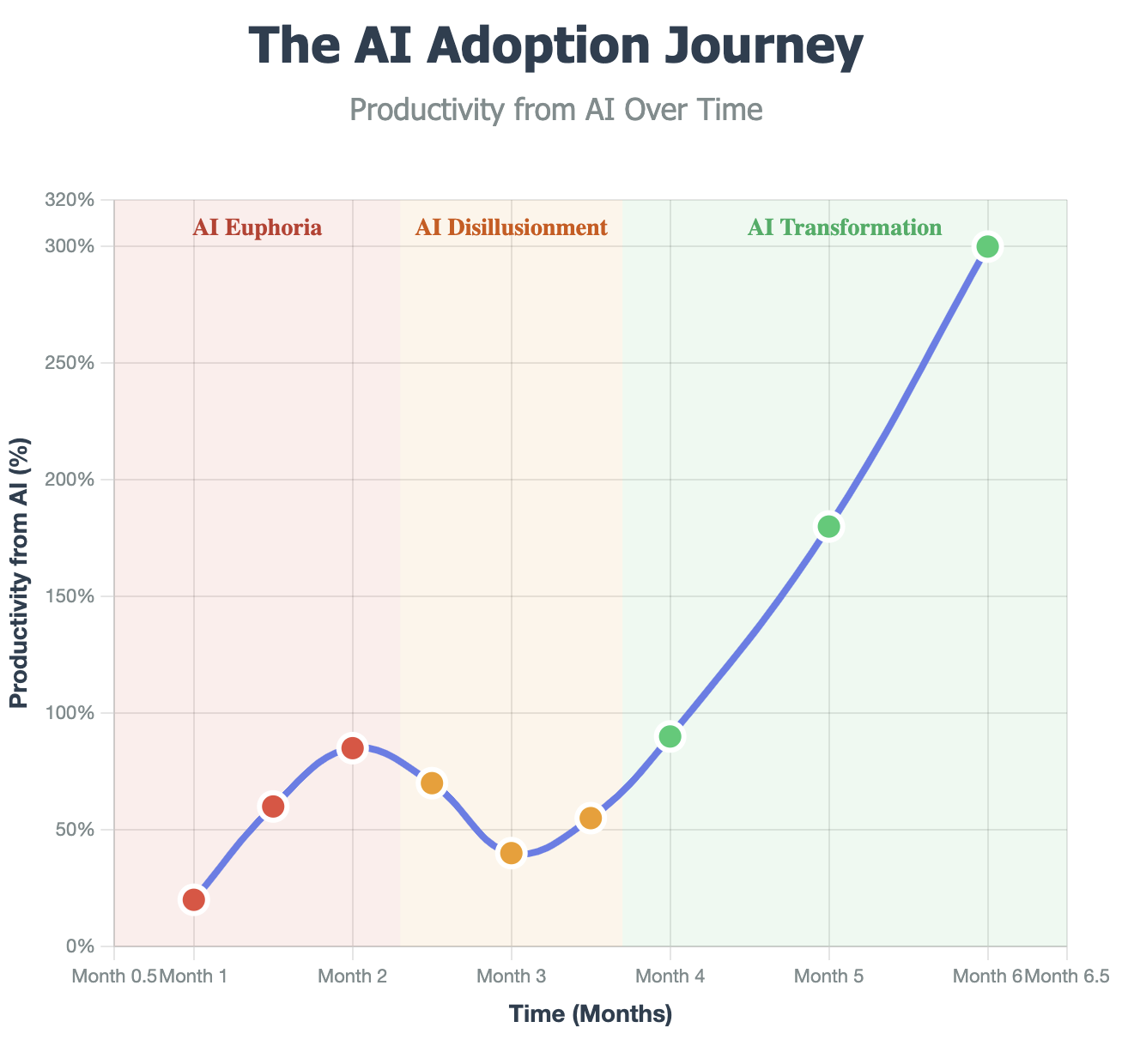After going through our own AI transformation and talking with other executives at early-stage companies, I've noticed we all follow the same pattern. The timeline moves fast, much faster than what larger organizations experience, but the three phases are consistent.
Phase 1: AI Euphoria (Months 1-2)
Everything feels magical at first. Code gets generated in seconds. Complex tasks that used to take hours now happen instantly. The team is excited about the possibilities, and productivity appears to skyrocket.
What happens:
- Developers accept most AI suggestions without much review
- Focus is on speed and what AI can do, not quality
- Management gets excited about potential productivity gains
- Team meetings become AI demo sessions
The trap: We mistake code generation speed for actual productivity.
Phase 2: AI Disillusionment (Month 3)
Reality hits. What looked like productivity gains started revealing themselves as technical debt. Problems emerged that weren't obvious during the euphoria phase.
What happens:
- AI-generated code lacks consistency and sometime follows outdated patterns
- Context gets lost, leading to solutions that break existing functionality
- AI changes code it wasn't asked to touch, introducing bugs
- Time spent crafting prompts often exceeds time to just write code manually
- Code reviews become debates about AI-generated approaches
The emotional reality: The tools that seemed magical now feel unreliable.
Phase 3: AI Transformation (Month 4+)
This is where the real transformation happens. Instead of using AI as a replacement for human judgment, it becomes a powerful amplifier of human expertise.
What changes:
- Tasks get broken down into small, well-defined pieces that AI handles well
- Developers understand they own all code that ships, regardless of who wrote it
- Every AI suggestion gets reviewed and aligned with team standards
- AI integration expands beyond development to other departments
- The company develops sophisticated approaches to maintaining context and quality
The result: We became an AI-first company with 3-3.5x productivity improvements across the organization.
Key Takeaways for Early-Stage Companies
The startup advantage is real. We can move through these phases faster because we're not constrained by legacy processes or organizational bureaucracy.
Phase 2 isn't failure—it's learning. Teams that try to skip the disillusionment phase often never reach true transformation.
It's about amplification, not replacement. AI works best when it enhances human judgment rather than trying to replace it.
The transformation goes beyond development. AI-first companies integrate AI across product, sales, marketing, and operations.
The companies that successfully navigate all three phases don't just code faster, they build a fundamental competitive advantage in how they operate and make decisions. If you're a CEO who hasn't embraced AI and given your team dedicated time during work hours to learn and explore, you're missing a huge opportunity that your competitors most likely aren't.
As I've said before, there's no magic AI pixie dust you can sprinkle over your company. You as the CEO or executive need to own the AI journey. When you do, great things will happen.











